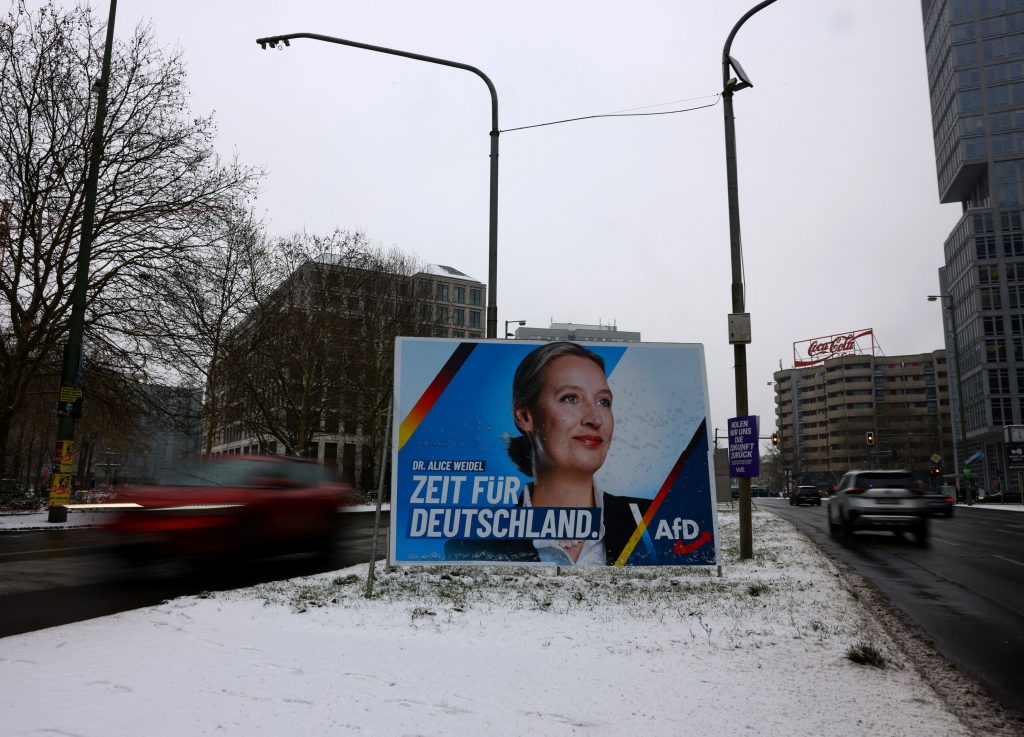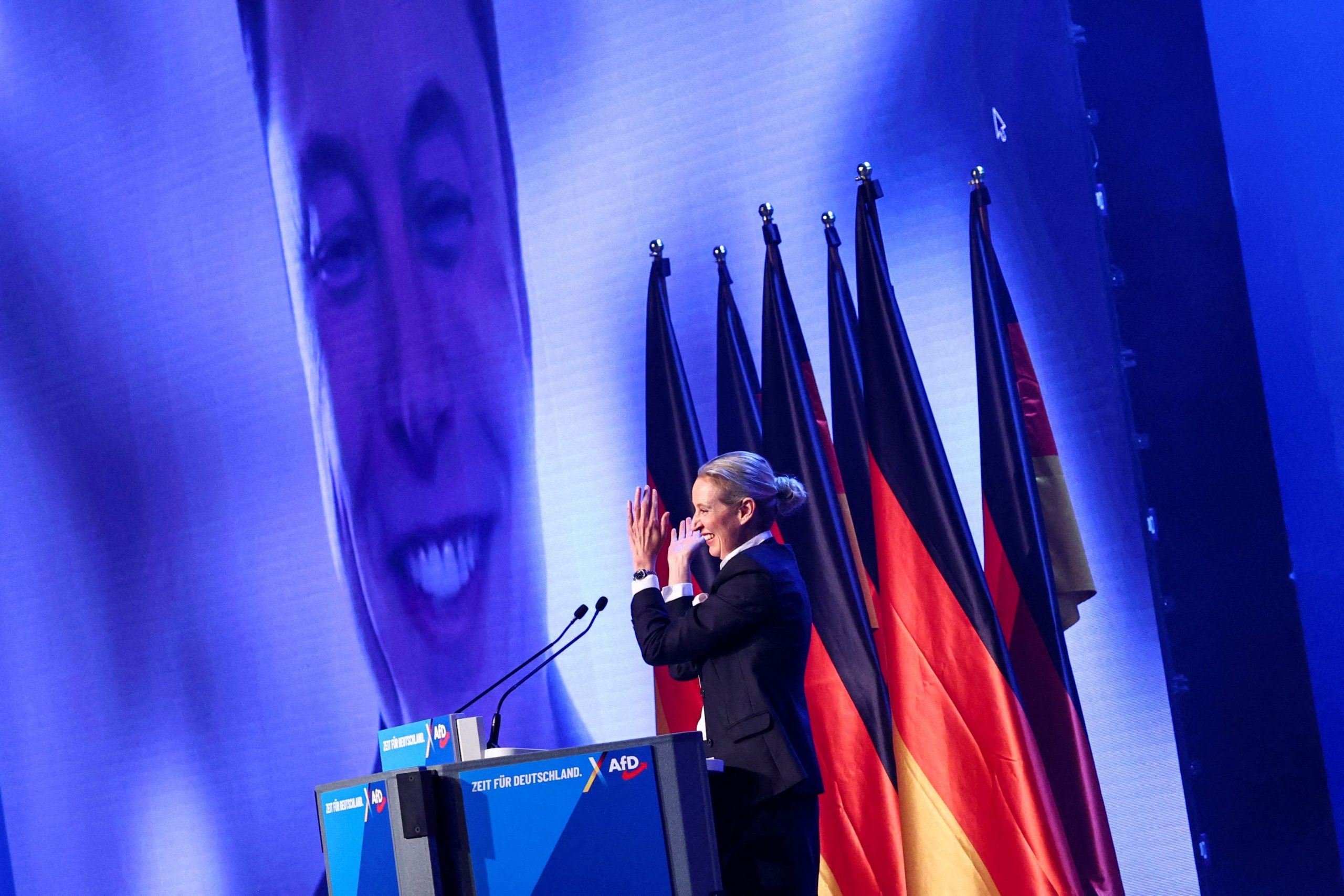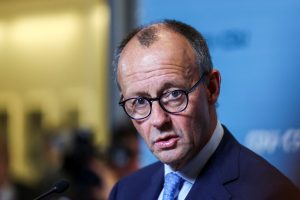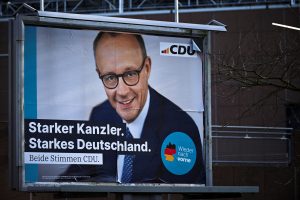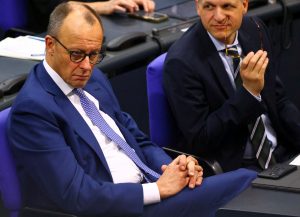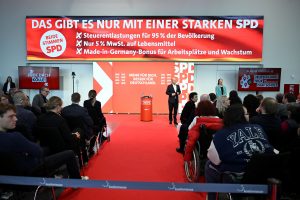BERLIN—For Germans browsing social media in recent months, one political party was tough to avoid.
The far-right Alternative for Germany, or AfD, which wants to pull Germany out of the European Union and fly immigrants back to their home countries, dominated online channels in the run-up to Sunday’s federal election, according to Unicepta, an independent research firm based in Cologne, Germany.
Social-media users responded to AfD messaging 17.5 million times between Jan. 1 and Feb. 17 on Facebook, Instagram, TikTok and X, the most of any party and more than the center-right Christian Democratic Union and center-left Social Democratic Party combined, according to the firm.

In this Friday, May 17, 2019 photo a man looks to an AfD website of the district Gera on his mobilphone during the street Europe and communal election campaigning of the far-right Alternative for Germany AfD in Gera, Germany. In Germany, the far-right AfD party is dominating the social media campaigns ahead of the European elections with attacks on the political establishment and fearmongering of migrants and Islam. The question is if their skilled digital campaigns will translate into a political success when Germany’s voters cast their ballot on May 26. (AP Photo/Jens Meyer)
Researchers said this blanket exposure might be one of the reasons for the AfD’s stellar performance at the ballot, where it doubled its share of the votes, scored the biggest gains of all parties, and finished first in many socio-economic groups, including taxpayers, voters under 50 and blue-collar workers.
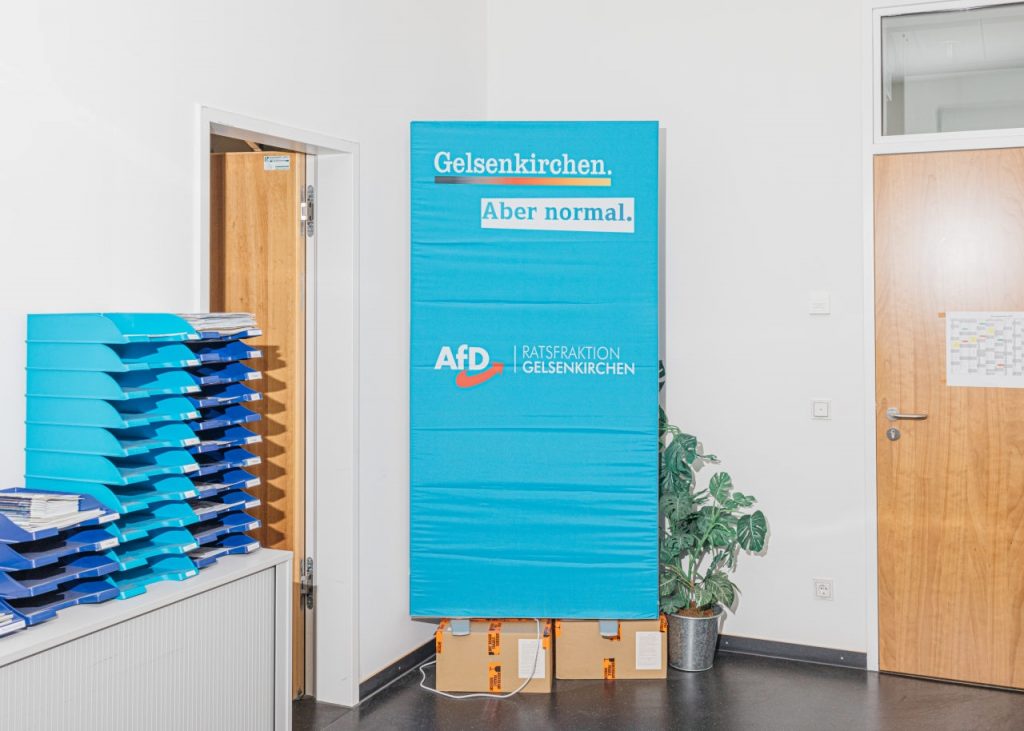
The AfD tripled its vote share among voters aged 18-24 this weekend compared with the 2021 election. Photo: Ksenia Ivanova for The Wall Street Journal
In a country where one-third of people now receive their news via social media, according to the Reuters Institute for the Study of Journalism, parties that can harness these platforms have a huge advantage in shaping public opinion.
“If you make a new TikTok account, you have to scroll through five or six AfD content clips. There is sometimes 400 times more AfD content” than that of the other parties, said Rüdiger Maas, founder of the Institute for Generational Research, a think tank in Augsburg, Germany. Any German spending 90 minutes on social media might be seeing AfD messaging for two-thirds of this time, Maas said.
Slick and combative videos, pushed through an ecosystem of party officials and independent influencers, drove millions more views than any other party, spilling into popular TV talk shows and helping to shape Germany’s public debate around immigration and free speech.
The AfD’s online campaign leveraged its status as a troublesome upstart, founded in 2013 to oppose the economic policies of former Chancellor Angela Merkel . It has opened up new classes of voters beyond the party’s traditional base among working-class East German men.
AfD leaders typically publish extracts from heated debates or speeches, while grassroots influencers focus on emotional diatribes against terrorist attacks in Germany, decry supposed constraints on free speech, or pull polemical stunts, often at the expense of left-wing activists.
“It’s a ‘breaking out of the Matrix‘ feeling,” said Naomi Seibt, a 24-year-old German living in the U.S. Seibt posts videos skewering Berlin’s immigration and German speech laws to hundreds of thousands of followers on X.
“In Germany everything is very traditionalist…very conformist. They don’t want to step out of line,” Seibt said.
Seibt said she isn’t paid by the AfD, and only connected with party leaders after helping to connect them with Elon Musk last year. “The truth is, the AfD is a bit disorganized on social media,” she said.
Nevertheless, 55% of young German voters said the AfD does the best job of reaching young voters via social media, with the Green party trailing in second place at 14%, according to a recent study by Maas’s Institute.
The AfD tripled its vote share among voters aged 18-24 this weekend compared with the 2021 election, to 21% from 7%. It roughly doubled its share among voters aged 25-44, to around 25%, according to Infratest dimap. A broader voter base sets the party up for further gains at the ballot box.
The AfD’s social-media campaign “is very strategic, and you have to say that it works,” said Jörg Müller-Lietzkow, a board member and spokesman for cnetz, an association for network policy that is close to the conservative CDU party. “There is no good answer right now from the traditional parties.”
The AfD’s messaging resonates on social media because the party presents itself authentically “and not like talking political robots,” said Leonard Jäger, a Christian influencer who posts pro-AfD videos to his half-million followers on YouTube.
In one video with nearly 800,000 views on YouTube, Jaeger walks through Berlin, a famously left-leaning city, bearing a placard saying, “I am right wing.” He recently interviewed AfD co-leader Alice Weidel about Christianity.
The AfD’s focus on social media goes back to its early days, when it was largely ostracized by traditional media and struggled to deliver its message that way. While its leaders are a fixture on TV today, they still argue that their message is often distorted or presented negatively.
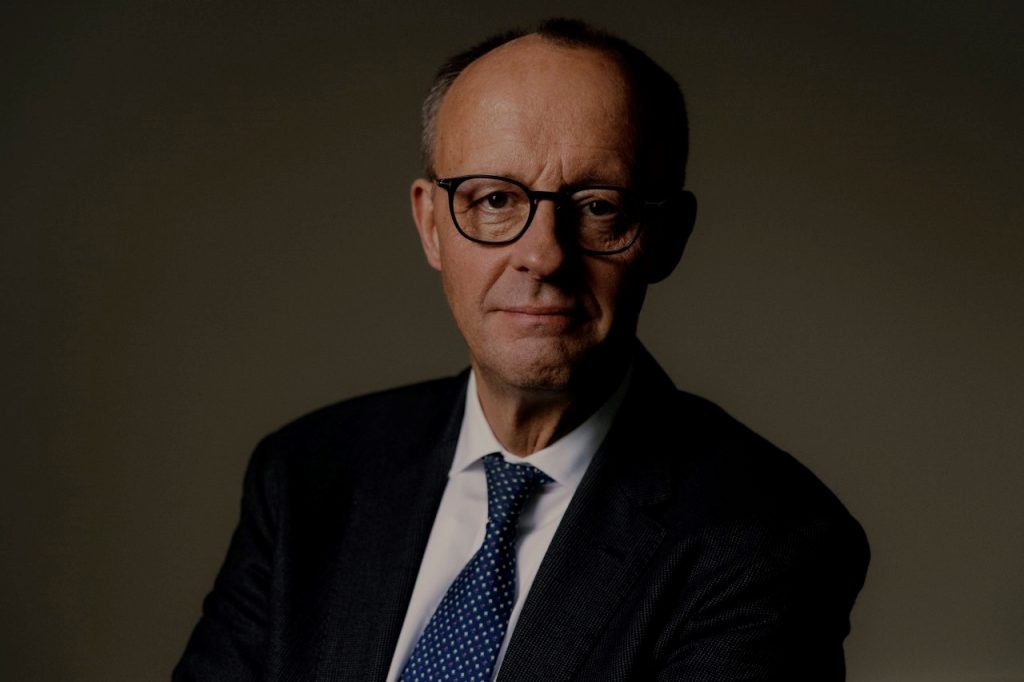
CDU leader Friedrich Merz has ruled out a coalition with the AfD. Photo: Marzena Skubatz for WSJ
The party’s “rhetoric is saying they are speaking in the name of the people, and social media is alleged evidence for this,” said Maik Fielitz, a researcher at the Institute for Democracy and Civil Society, a think tank in the east German state of Thuringia.
Influencers like Jaeger and Seibt don’t tone down the party’s messages on immigration or seek to break with its most controversial figures, some of whom have links with neo-Nazis. On the contrary, they double down on hard-line messages, package it for a wider audience and drum up attention outside Germany.
That maximalist approach resembles Donald Trump’s campaign strategy, which helped him win the presidency with a wider margin than in 2016. Trump’s victory showed Germans “that there is hope for those who oppose the mainstream,” said Seibt. “Most Germans didn’t expect him to win.”
The AfD’s “main electoral successes happened…where they have the most radical regional branches, in the Eastern states, so that is clearly seen as a recipe for success,” said Johannes Hillje, a political consultant and former Green Party campaigner.
Other European right-wing parties, in France and Italy, have softened their messages instead in successful efforts to broaden their appeal. Unlike the AfD in Germany, Marine Le Pen’s National Rally regularly tops opinion polls in France.
Despite its record performance on Sunday, about 80% of German voters still rejected the AfD, effectively locking it out of office at the national level. Conservative CDU leader Friedrich Merz , whose party came first in Sunday’s election, has ruled out a coalition with the AfD even though the parties would have a majority and many key policies are similar.
Write to Tom Fairless at tom.fairless@wsj.com
